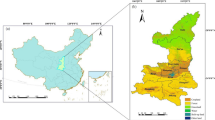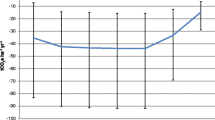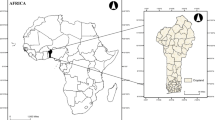Abstract
Keeping the relationship between economic development, humankind and the environment in balance has been one of the main challenges of economic policies and science in recent years. Such concerns are recurrent when it comes to climate change and the dependence of the economic process on finite resources. In this way, the present study aims to assess Greenhouse Gases (GHG) emissions from the agricultural and livestock production and the Rural Development Index (RDI), seeking to identify the spatial relationship of these two variables among Brazilian states in 2010. The methodology used to meet the objective was the Exploratory Analysis of Spatial Data (EASD), which incorporates spatial factors. The main results obtained show that both RDI and emissions are positively influenced by space. Different patterns of association were observed among Brazilian states: states characterized by low emissions and high RDI; high emissions and high RDI; and low emissions and low RDI. Most parts of the states with high emissions are relevant livestock producers. It indicates, thus, that investments in more sustainable practices for livestock production allied with the promotion of welfare shall be encouraged. Although being a time cut, this study brings evidence that high levels of rural development, in its broad sense, do not always mean high emissions rates, the latter depending more on the type of agricultural and livestock activity practiced.


Source: elaborated with research results. Note: RDI values range from 0 to 1, GHG metric is tons of equivalent carbon dioxide


Similar content being viewed by others
Availability of data and material
The authors declare that the data supporting the findings of this study are available within the article and its supplementary information files.
Notes
Understood here in the terms defined by Georgescu-Roegen (1971), where entropy represents the energy that does not generate work (from physics definition). The world’s general trend is the maximum entropy, where energy assumes a disordered form. Therefore, low entropy means the opposite. That is, an ordered form of energy, with a higher potential of generating work.
References
Alvares, C. A., Stape, J. L., Sentelhas, P. C., et al. (2013). Köppen’s climate classification map for Brazil. Meteorol Zeitschrift, 22, 711–728. https://doi.org/10.1127/0941-2948/2013/0507
Anselin, L., Florax, R. J. G. M., & Rey, S. J. (2004). Econometrics for spatial models: Recent advances. Advances in Spatial Econometrics. https://doi.org/10.1007/978-3-662-05617-2_1
Anselin L (2005) Exploring spatial data with geoda TM : A workbook. urbana-champaign Urbana
Apte, J. S., Kirchstetter, T. W., Reich, A. H., et al. (2011). Concentrations of fine, ultrafine, and black carbon particles in auto-rickshaws in New Delhi, India. Atmospheric Environment, 45, 4470–4480. https://doi.org/10.1016/j.atmosenv.2011.05.028
Azevedo TR, Angelo C (2018) EMISSÕES DE GEE NO BRASIL e suas implicações para políticas públicas e a contribuição brasileira para o Acordo de Paris
Baumont C, Ertur C, Gallo J Le, et al (2000) Geographic spillover and growth ( a spatial econometric analysis for european regions )
Baumont C (2004) Spatial effects in housing price models : do housing prices capitalize urban development policies in the agglomeration of Dijon ( 1999 ) ?
Bresser-Pereira LC (2006) O conceito histórico de desenvolvimento econômico. São Paulo
Carauta, M., Latynskiy, E., Mössinger, J., et al. (2018). Can preferential credit programs speed up the adoption of low-carbon agricultural systems in Mato Grosso, Brazil? Results from bioeconomic microsimulation. Regional Environmental Change, 18, 117–128. https://doi.org/10.1007/s10113-017-1104-x
Cole, M. A., Rayner, A. J., & Bates, J. M. (1997). The environmental Kuznets curve: An empirical analysis. Environment Devices Economy, 2, 401–416. https://doi.org/10.1017/S1355770X97000211
Copeland, B. R., & Taylor, M. S. (2004). Trade, growth, and the environment. J Econ Lit XLII, 42(1), 7–71.
da Silva, R. F. B., Batistella, M., Millington, J. D. A., et al. (2020). Three decades of changes in brazilian municipalities and their food production systems. Land, 9, 1–17. https://doi.org/10.3390/land9110422
Daly, H. E. (2004). Crescimento sustentável? Não, obrigado. Ambiente Society, 7, 197–202. https://doi.org/10.1590/S1414-753X2004000200012
Daugbjerg, C., & Swinbank, A. (2012). An introduction to the “new” politics of agriculture and food. Policy Society, 31, 259–270. https://doi.org/10.1016/j.polsoc.2012.10.002
de Sá, J. C., M, Lal R, Cerri CC, et al. (2017). Low-carbon agriculture in South America to mitigate global climate change and advance food security. Environment International, 98, 102–112. https://doi.org/10.1016/j.envint.2016.10.020
Ding, Y., Zhang, M., Chen, S., et al. (2019). The environmental Kuznets curve for PM 2.5 pollution in Beijing- Tianjin-Hebei region of China : A spatial panel data approach. Journal of Cleaner Production. https://doi.org/10.1016/j.jclepro.2019.02.229
FAO (2019) FAOSTAT. In: Food Agric. Organ. http://www.fao.org/faostat/en/#data. Accessed 17 Jun 2019
Ferreira, A. G., da Mello, N. G., & S,. (2005). Principais Sistemas Atmosféricos Atuantes Sobre a Região Nordeste Do Brasil E a Influência Dos Oceanos Pacífico E Atlântico No Clima Da Região. Rev Bras Climatol, 1, 15–28. https://doi.org/10.5380/abclima.v1i1.25215
Florides, G. A., & Christodoulides, P. (2009). Global warming and carbon dioxide through sciences. Environment International, 35, 390–401. https://doi.org/10.1016/j.envint.2008.07.007
Foley, J. A., Ramankutty, N., Brauman, K. A., et al. (2011). Solutions for a cultivated planet. Nature, 478, 337–342. https://doi.org/10.1038/nature10452
Galford, G. L., Soares-Filho, B., & Cerri, C. E. P. (2013). Prospects for land-use sustainability on the agricultural frontier of the Brazilian Amazon. Philosophical Transactions of the Royal Society B Biological Science. https://doi.org/10.1098/rstb.2012.0171
Garnett, T., Appleby, M. C., Balmford, A., et al. (2013). Sustainable intensification in agriculture: Premises and policies. Science, 80(341), 33–34. https://doi.org/10.1126/science.1234485
Georgescu-Roegen N (2012) O decrescimento. Entropia. Ecologia. Economia. Editora Senac São Paulo, São Paulo
Georgescu-Roegen, N. (1971). The Entropy Law and the Economic Process. Grã-Bretanha.
Giampietro, M. (2019). On the circular bioeconomy and decoupling: implications for sustainable growth. Ecological Economics, 162, 143–156. https://doi.org/10.1016/j.ecolecon.2019.05.001
Giannetti, B. F., Agostinho, F., Almeida, C. M. V. B., & Huisingh, D. (2015). A review of limitations of GDP and alternative indices to monitor human wellbeing and to manage eco-system functionality. Journal of Cleaner Production, 87, 11–25. https://doi.org/10.1016/j.jclepro.2014.10.051
Gil, J. D. B., Garrett, R. D., Rotz, A., et al. (2018). Tradeoffs in the quest for climate smart agricultural intensification in Mato Grosso. Brazil. Environ Res Lett. https://doi.org/10.1088/1748-9326/aac4d1
Godfray, H. C. J., Beddington, J. R., Crute, I. R., et al. (2010). Food security: The challenge of feeding 9 billion people. Science, 80(327), 812–818. https://doi.org/10.1126/science.1185383
Godfray, H. C. J., & Garnett, T. (2014). Food security and sustainable intensification. Philosophical Transactions of the Royal Society of London. Series B, Biological Sciences, 369, 20120273. https://doi.org/10.1098/rstb.2012.0273
Green, R. F., Joy, E. J. M., Harris, F., et al. (2018). Greenhouse gas emissions and water footprints of typical dietary patterns in India. Science of the Total Environment, 643, 1411–1418. https://doi.org/10.1016/j.scitotenv.2018.06.258
Grossman, G. M., & Krueger, A. B. (1995). Economic Growth and the Environment. The Quarterly Journal of Economics, 110, 353–377. https://doi.org/10.2307/2118443
Haile, B., Signorelli, S., Azzarri, C., & Guo, Z. (2019). A spatial analysis of land use and cover change and agricultural performance: Evidence from northern Ghana. Environment and Development Economy, 24, 67–86. https://doi.org/10.1017/S1355770X18000323
Hasegawa, T., Fujimori, S., Havlík, P., et al. (2018). Risk of increased food insecurity under stringent global climate change mitigation policy. Nature Clinical Practice Endocrinology & Metabolism, 8, 699–703. https://doi.org/10.1038/s41558-018-0230-x
IBGE (2020) Dados. In: Estatísticas. https://www.ibge.gov.br/
IBRE (2019) IBRE. In: In: Inst. Bras. Econ. (IBRE), Fundação Getulio Vargas. https://portalibre.fgv.br/. Accessed 4 Jun 2020
Jiang, J., Ye, B., Zhou, N., & Zhang, X. (2019). Decoupling analysis and environmental Kuznets curve modelling of provincial-level CO 2 emissions and economic growth in China : A case study. Journal of Cleaner Production, 212, 1242–1255. https://doi.org/10.1016/j.jclepro.2018.12.116
Krug T, Ometto J, Aragão L, Vinhas L (2019) O Brasil e as Mudanças Climáticas
Kubiszewski, I., Mulder, K., Jarvis, D., & Costanza, R. (2021). Toward better measurement of sustainable development and wellbeing : A small number of SDG indicators reliably predict life satisfaction. Sustainable Development. https://doi.org/10.1002/sd.2234
Kuznets, S. (1954). Economic growth and income inequality. The American Economic Review, 45, 1–28. https://doi.org/10.2307/1811581
Leite-Filho, A. T., Soares-Filho, B. S., Davis, J. L., et al. (2021). Deforestation reduces rainfall and agricultural revenues in the Brazilian Amazon. Nature Communications, 12, 1–7. https://doi.org/10.1038/s41467-021-22840-7
Lewis PWA (1979) O desenvolvimento económico com oferta ilimitada de mão-de-obra. A Econ do subdesenvolvimento
Li, J., Luo, Y., & Wang, S. (2019a). Spatial effects of economic performance on the carbon intensity of human well-being : The environmental Kuznets curve in Chinese provinces. Journal of Cleaner Production, 233, 681–694. https://doi.org/10.1016/j.jclepro.2019.05.396
Li, L., Hong, X., & Peng, K. (2019b). A spatial panel analysis of carbon emissions, economic growth and high-technology industry in China. Structural Change and Economic Dynamics, 49, 83–92. https://doi.org/10.1016/j.strueco.2018.09.010
Liu, X., Zhang, S., & Bae, J. (2017). The impact of renewable energy and agriculture on carbon dioxide emissions: Investigating the environmental Kuznets curve in four selected ASEAN countries. Journal of Cleaner Production, 164, 1239–1247. https://doi.org/10.1016/J.JCLEPRO.2017.07.086
Maluf, R. S. (1998). Economic development and the food question in Latin America. Food Policy (united Kingdom), 23(2), 155–172.
MAPA (2012) Plano Setorial de Mitigação e de Adaptação às Mudanças Climáticas para a Consolidação de uma Economia de Baixa Emissão de Carbono na Agricultura. Brasília
Masson-Delmotte V, Zhai P, Pirani A, et al (2021) IPCC, 2021: Summary for policymakers. In: Climate change 2021: The physical science basis. contribution of working group I to the sixth assessment report of the intergovernmental panel on climate change
Merten, G. H., & Minella, J. P. G. (2013). The expansion of Brazilian agriculture : Soil erosion scenarios. International Soil Water Conservervation Research, 1, 37–48. https://doi.org/10.1016/S2095-6339(15)30029-0
Montemayor, E., Bonmatí, A., Torrellas, M., et al. (2019). Resources, conservation & recycling environmental accounting of closed-loop maize production scenarios : Manure as fertilizer and inclusion of catch crops. Resources, Conservation and Recycling, 146, 395–404. https://doi.org/10.1016/j.resconrec.2019.03.013
Montoya, M. A., Allegretti, G., Sleimann Bertussi, L. A., & Talamini, E. (2021). Renewable and Non-renewable in the energy-emissions-climate nexus: Brazilian contributions to climate change via international trade. Journal of Cleaner Production. https://doi.org/10.1016/j.jclepro.2021.127700
Moz-Christofoletti, M. A., & Pereda, P. C. (2021). Winners and losers: The distributional impacts of a carbon tax in Brazil. Ecological Economics, 183, 106945. https://doi.org/10.1016/j.ecolecon.2021.106945
OC O do C, IMAFLORA I de M e CF e A (2018) Emissões do Setor de Agropecuária. Período 1970 - 2016
Odum, E., & Barrett, G. (2001). Fundamentos de Ecologia. Cengage Learning.
Olale, E., Ochuodho, T. O., Lantz, V., & El, J. (2018). The environmental Kuznets curve model for greenhouse gas emissions in Canada. Journal of Cleaner Production, 184, 859–868. https://doi.org/10.1016/j.jclepro.2018.02.178
Parker, L., Bourgoin, C., Martinez-Valle, A., & Läderach, P. (2019). Vulnerability of the agricultural sector to climate change: The development of a pan-tropical Climate Risk Vulnerability Assessment to inform sub-national decision making. PLoS ONE, 14, e0213641.
Piatto M, Junior CC, Quintana G, et al (2020) Nota Metodológica Setor Agropecuário
Ploeg, J. D., Yingzhong, Y., & Schneider, S. (2010) Rural development reconsidered: Building on comparative perspectives from China, Brazil and the European Union. Riv Di Econ Agrar, 2, 163–190.
PNUD (2016) Desenvolvimento humano nas macrorregiões brasileiras. Brasilia-DF
Rover, O. J., De, G. B. C., & Roselli, L. (2017) Social innovation and sustainable rural development: The case of a Brazilian agroecology network. Sustainability, 9, 1–14. https://doi.org/10.3390/su9010003
SEEG S de E de E de G de EE (2020) Sistema de Estimativa de Emissões de Gases de Efeito Estufa. In: Sist. Estim. Emiss. Gases Efeito Estufa Data. http://seeg.eco.br/. Accessed 4 Jun 2020
SEEG (SISTEMA DE ESTIMATIVA DE EMISSÕES DE GASES DE EFEITO ESTUFA) (2021) Emissões do Brasil sobem 9% em 2016 - Observatório do Clima. In: 2017. http://www.observatoriodoclima.eco.br/emissoes-brasil-sobem-9-em-2016/. Accessed 28 Jan 2021
Takimoto A (2007) Carbon Sequestration Potential of Agroforestry Systems. UNIVERSITY OF FLORIDA
The World Bank (The World Bank) (2010) Relatório sobre o Desenvolvimento Mundial 2010. Washington, D.C.
Todaro, M., & Smith, S. C. (2011). Economic Development (11th ed.). Pearson Education Limited.
Veiga JE da (2010) Sustentabilidade: a legitimação de um novo valor. Ed Senac
Vita, G., Hertwich, E. G., Stadler, K., & Wood, R. (2019). Connecting global emissions to fundamental human needs and their satisfaction. Environmental Research Letters, 14(1), 014002. https://doi.org/10.1088/1748-9326/aae6e0
Wassmann, R., Villanueva, J., Khounthavong, M., et al. (2019). Adaptation, mitigation and food security: Multi-criteria ranking system for climate-smart agriculture technologies illustrated for rainfed rice in Laos. Global Food Security, 23, 33–40. https://doi.org/10.1016/j.gfs.2019.02.003
Wu, K., Wang, S., Yu, J., et al. (2020). Enhanced sustainable green revolution yield via nitrogen-responsive chromatin modulation in rice. Science. https://doi.org/10.1126/science.aaz2046
Xu, Q., Dong, Y., & Yang, R. (2018). Urbanization impact on carbon emissions in the Pearl River Delta region: Kuznets curve relationships. Journal of Cleaner Production, 180, 514–523. https://doi.org/10.1016/j.jclepro.2018.01.194
Yan, Z., Li, W., Yan, T., et al. (2019). Evaluation of energy balances and greenhouse gas emissions from different agricultural production systems in Minqin Oasis, China. PeerJ, 2019, 1–28. https://doi.org/10.7717/peerj.6890
Yao, S., Zhang, S., & Zhang, X. (2019). Renewable energy, carbon emission and economic growth: A revised environmental Kuznets Curve perspective *. Journal of Cleaner Production, 235, 1338–1352. https://doi.org/10.1016/j.jclepro.2019.07.069
Zhou, C., Wang, S., & Wang, J. (2019). Examining the influences of urbanization on carbon dioxide emissions in the Yangtze River Delta, China: Kuznets curve relationship. Science of the Total Environment, 675, 472–482. https://doi.org/10.1016/j.scitotenv.2019.04.269
Acknowledgements
The authors gratefully acknowledge the financial assistance of the Agribusiness Postgraduate Program of Federal University of Rio Grande do Sul—Brazil and the Coordination for the Improvement of Higher Education Personnel—Brazil (CAPES, initials in Portuguese) for doctoral scholarships (Processes numbers 88887.498823/2020-00, 88882.439350/2019-01, 88887.488799/2020-00 and 88882.457565/2019-01).
Author information
Authors and Affiliations
Corresponding author
Additional information
Publisher's Note
Springer Nature remains neutral with regard to jurisdictional claims in published maps and institutional affiliations.
Supplementary Information
Below is the link to the electronic supplementary material.
Rights and permissions
Springer Nature or its licensor (e.g. a society or other partner) holds exclusive rights to this article under a publishing agreement with the author(s) or other rightsholder(s); author self-archiving of the accepted manuscript version of this article is solely governed by the terms of such publishing agreement and applicable law.
About this article
Cite this article
Batistella, P., Presotto, E., Lovato, L.G. et al. Rural Development Index (RDI) and GHG emissions of agricultural and livestock production: a spatial analysis of the Brazilian states. Environ Dev Sustain 26, 3147–3164 (2024). https://doi.org/10.1007/s10668-022-02777-7
Received:
Accepted:
Published:
Issue Date:
DOI: https://doi.org/10.1007/s10668-022-02777-7




